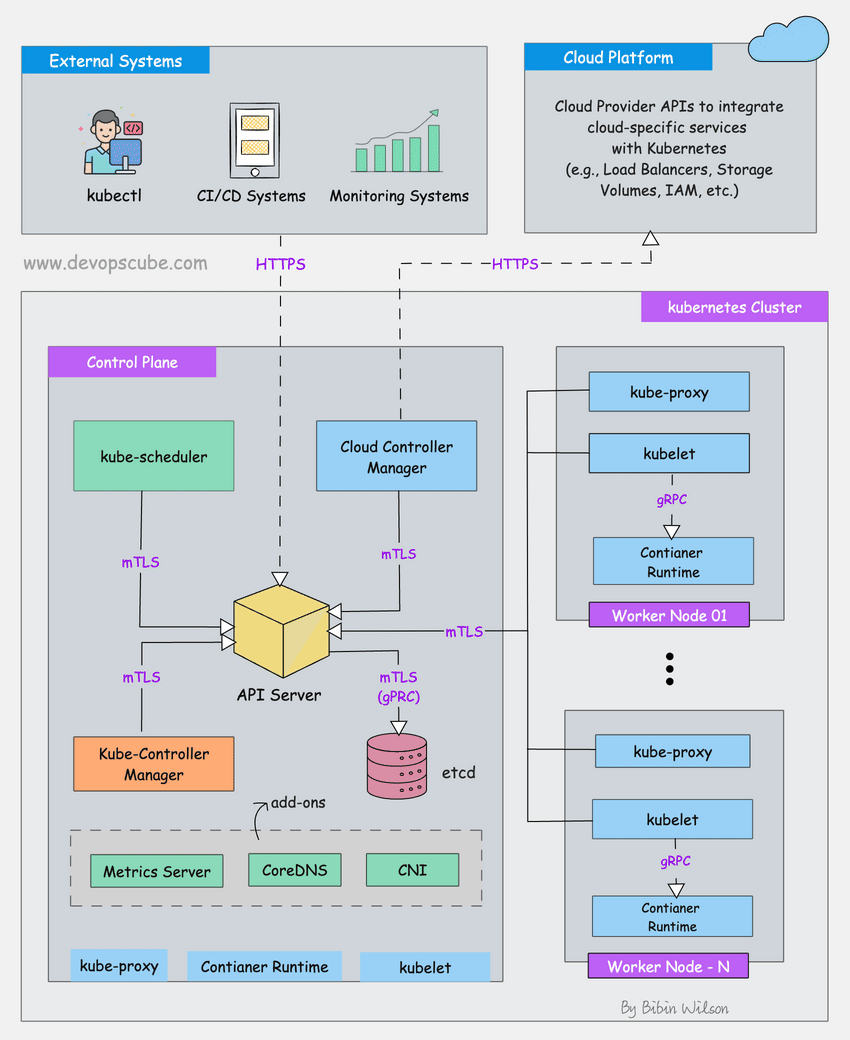I've been running Kubernetes in production since 2019. Here's what nobody tells you: it's complicated as fuck and expensive as hell, but sometimes you actually need it. Most companies don't.
The real question isn't whether Kubernetes works - it does. The question is whether you can afford the complexity tax and whether you have engineers who won't quit after debugging YAML indentation errors for the third time this week.
What's Actually Happening Right Now (September 2025)
Version Nightmare: Kubernetes v1.34 dropped in August 2025. New versions every quarter mean your platform team spends 20% of their time just keeping up with breaking changes. I learned this the hard way when 1.25 broke our ingress controllers and took down prod for 2 hours.
The Hype vs Reality: Everyone's running Kubernetes now because FOMO is real. But here's what the surveys don't tell you - most teams are using it to run 3 web apps that would be perfectly fine on Heroku. The complexity tax is insane for simple workloads.

What Actually Works (And What Doesn't)
When Kubernetes Saves Your Ass
Auto-scaling Actually Works: When Black Friday hits and your traffic spikes 10x, horizontal pod autoscaling will spin up containers faster than you can manually provision VMs. I've seen this save multiple ecommerce deployments from melting down.
Self-Healing is Real: Pods crash, nodes die, shit happens. Kubernetes will restart your stuff automatically. This isn't marketing fluff - I've watched it recover from AWS availability zone failures without human intervention. Just don't ask me to explain why the pod was crashing in the first place.
Multi-Cloud Isn't Bullshit: Moving between AWS EKS, Google GKE, and Azure AKS is actually possible if you avoid vendor-specific crap. The YAML hell is consistent across clouds, which is something, I guess.
The Money Drain Reality

What AWS Will Charge You:
- EKS control plane: $72/month (whether you use it or not)
- Worker nodes: Starts at $200/month, escalates quickly if you don't know resource requests
- Load balancers: $18/month each, and you'll have more than you think
The Real Budget Killers:
- Platform engineers: You need at least 2-3 people who know this stuff ($150k+ each)
- Your AWS bill will triple: Nobody warns you about the hidden costs of volumes, networking, and data transfer
- Consultant fees: $200-300/hour when you inevitably break something at 3am
Bottom Line: I've seen startups burn through $50k/month on Kubernetes for workloads that cost $500/month on Heroku. Enterprise teams easily hit $10k+/month in direct costs, plus the engineering time that could be building features instead of debugging pod networking.
The Performance Reality Check
Scale That Actually Matters: Kubernetes can handle stupid amounts of scale - 5,000 nodes, 150,000 pods. But unless you're Netflix, you probably don't need this. Most companies run 10-50 nodes and spend more time fighting the complexity than enjoying the scale.
Reliability Has a Catch: Yeah, Kubernetes will restart crashed pods automatically. But debugging why they're crashing involves diving into control loops, event logs, and YAML configurations that would make a grown engineer cry. The self-healing works, but the diagnostic experience is shit.
Performance Tax: Container networking adds latency. Service meshes add more latency. You'll pay 10-20% performance overhead for the privilege of YAML-driven infrastructure. Sometimes that's worth it, often it's not.
The Learning Curve From Hell
What Your Team Will Experience: Give yourself 6 months to stop breaking things daily, 12+ months before you're confident enough to sleep through the night without checking alerts. The YAML configuration seems simple until you need to understand pods, services, deployments, ingress, persistent volumes, and how they all interact.
Day-to-Day Operations: kubectl becomes muscle memory after a while. kubectl get pods is your new ps aux. But when networking breaks or storage fails, you'll spend days reading GitHub issues and Stack Overflow threads trying to figure out why your perfectly working deployment suddenly can't reach the database. Bonus points when it's because of a typo in your service selector - app: frontend vs app: front-end will waste 4 hours of your life.
The Verdict: Do you have 3+ platform engineers who won't quit after debugging YAML hell for the tenth time? No? Then use Docker Swarm and actually ship features instead of fighting infrastructure.
Your CTO is probably still convinced you need this because they read some Medium article about "scaling like Netflix." Fine, let's talk alternatives that actually work without requiring a PhD in YAML.




